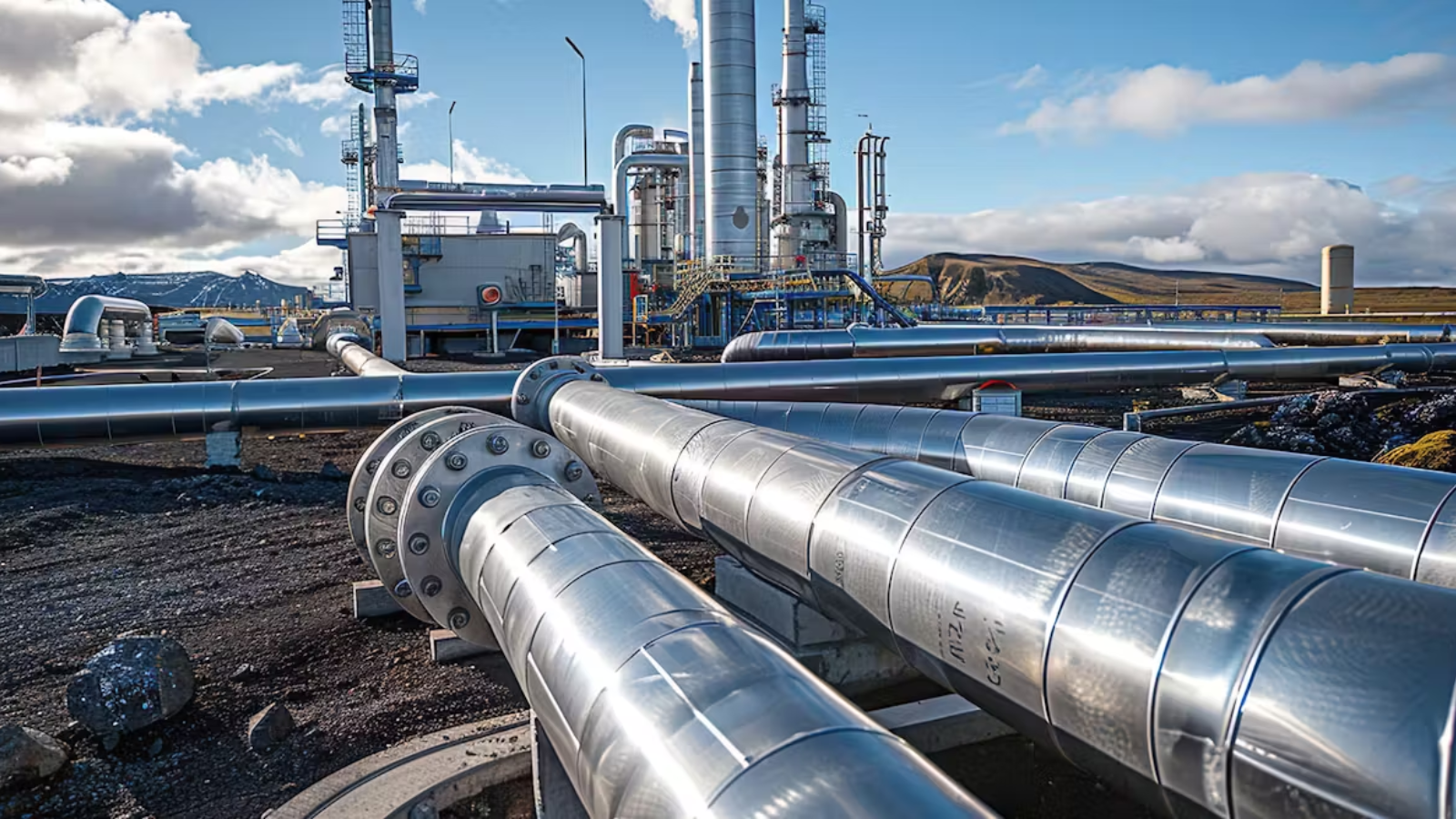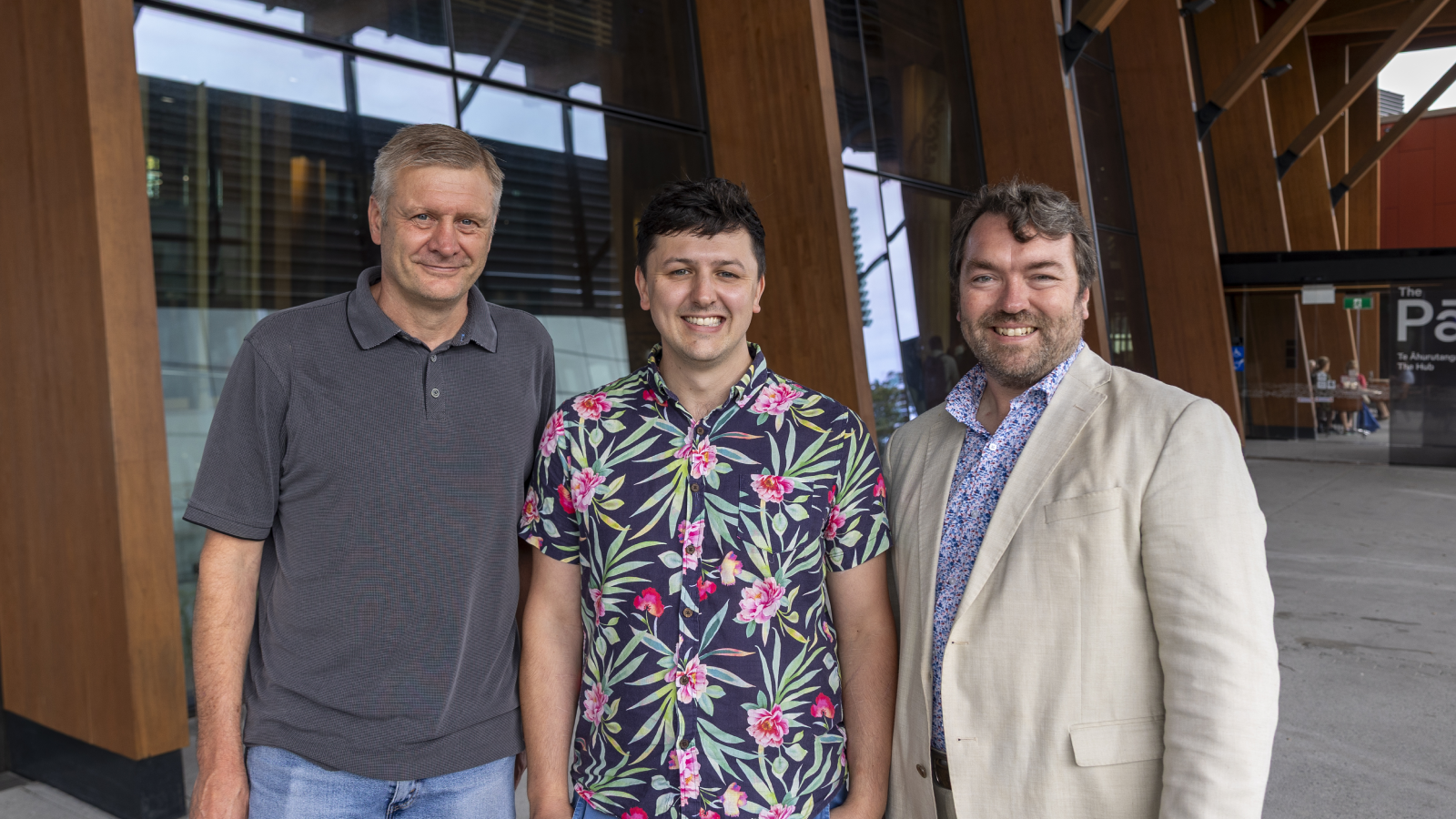Since 2016, Professor Clarkson has led a Ministry of Business, Innovation and Employment (MBIE) funded research programme, People, Cities and Nature, which focuses on restoring indigenous nature in urban environments.

Mayor Paula Southgate with Professor Bruce Clarkson at Waiwhakareke Natural Heritage Park. Photo by Mike Walen, Hamilton City Council.
His research has guided many biodiversity and ecological restoration projects, including Waiwhakareke Natural Heritage Park and the Hamilton gully restoration programme.
“Bruce is a huge treasure to council - and a taonga for our city - because we can rely on him for all the years of work he has done and the expertise he has,” says Hamilton Mayor Paula Southgate, who presented the medal.
“New Zealand’s biodiversity is under great threat and still is. If it wasn’t for people like Bruce, we’d be in a worse situation.”
Mayor Southgate says Bruce’s research has helped guide the council's increased commitment to environmental sustainability, native planting and biodiversity in the Nature in the City Strategy and the Long Term Plan.
“Being a green city is one of our strategic priorities,” says Mayor Southgate. “Bruce has much of the knowledge and the science expertise which underpins so many of our environmental projects across the city, and beyond.”
She recalls meeting Professor Clarkson early in her political career, when he laid out his vision for Waiwhakareke Natural Heritage Park near Hamilton Zoo.
Since 2004, the 65.5 hectare council-owned site has been transformed from farm paddocks into an internationally acclaimed regenerating native forest, wetland and a lake ecosystem rich in biodiversity. Community groups and schools have rallied to plant native trees and develop the area.
“Bruce’s research has created a massive ripple effect in the community,” says Mayor Southgate. “He shares his knowledge in such a relaxed, low key way which means it becomes accessible to everyone.”
His research has also supported urban gully restoration. Hamilton has four major gully systems, winding through some 750 hectares of its suburban backyards.
“These are really important because they are the lungs of our city,” says Mayor Southgate. “They rejuvenate the air we breathe, they filter our run-off water, they provide a home for native birds and other critters, and they are absolutely fundamental to protecting our biodiversity for the future.”
Greening urban environments also has benefits for human health and wellbeing, which is the focus of Professor Clarkson’s new MBIE Endeavour Fund research proposal, Restoring Urban Nature.
“As our cities get bigger and our buildings get higher, green space becomes actually pivotal in my view,” says Mayor Southgate. “And Bruce has always known that - the healing power of being in green space.”
The Hamilton Kirikiriroa Medal was awarded to two others at Monday’s ceremony, including Professor Clarkson’s wife, Dr Bev Clarkson, an internationally renowned expert in wetlands research and restoration at Manaaki Whenua – Landcare Research.
Together, the Clarksons have demonstrated “extraordinary services to the environment and education in our city”, says Mayor Southgate.
The Hamilton Kirikiriroa Medal was introduced in 2014 to shine a light on “the best of the very best”, says Mayor Southgate.
“These are our shining stars. We don’t give [the medals] out lightly, the criteria is pretty rigorous. The medal goes to people who have had a huge impact on the wellbeing of Hamilton and have been at their work for a long period of time.“
Professor Clarkson said he and Bev were “honoured” to receive their medals.
“It shows that our research is valued and that the council understands the value of investment in nature.”
More information about Bruce and his work can be found here Research with impact.
This research aligns with the following United Nations Sustainable Development Goals:








